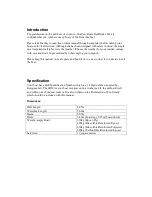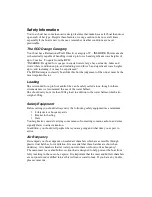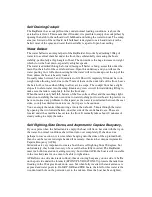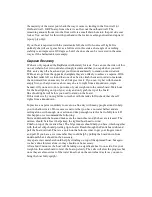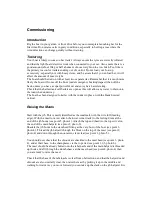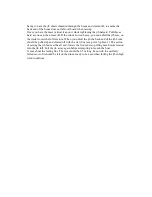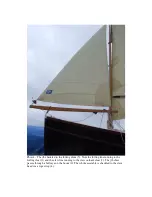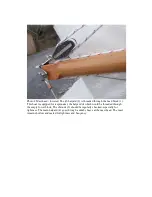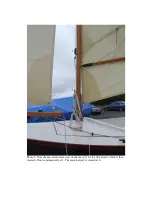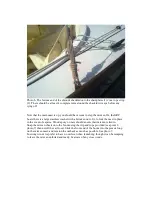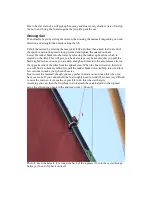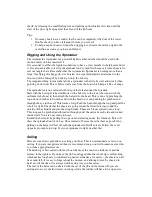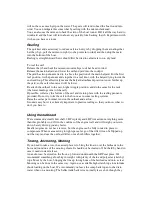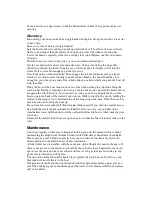
Self Draining Cockpit
The BayRaider has a cockpit floor that, under normal loading conditions, is above the
external water level. This means that if flooded, it is possible to empty the cockpit fast by
opening the hatch in the outboard well bulkhead and letting the water run out. The sump
area just forward of the outboard well bulkhead is designed to catch and drain (via the
bailer) most of the spray and water that inevitably is a part of open boat sailing.
Water Ballast
The water ballast is an integral part of the BayRaider. It works by admitting 300kg of
water into a central chamber under the floor, thus substantially increasing the boats
stability, particularly at high angles of heel. The downside is the huge increase in weight
which slows the boat down, especially at higher speeds.
The water is admitted through a forward facing self bailer or bung, accessible under the
main floor hatch aft of the centreboard case. Open this underway and you will see the
water pouring in. A little disconcerting but the water will not come up over the top of the
floor, unless the boat is heavily loaded.
It usually takes between 5 and 10 minutes to fill. She will completely fill under her own
weight when floating level, due to the 75mm of foam on the underside of the floor. Leave
the hatch off, or loose when filling to allow air to escape. The cockpit floor has a slight
slope aft to drain water into the sump. Ensure any crew sit well forward during filling to
make sure the tank is completely full at the front end.
When the tank is only half full, beware of the free surface effect and the resulting slight
reduction in stability that can occur due to water sloshing port to starboard. In practice we
have not noticed any problems in this regard, as the water is constrained between the seat
sides, so only has limited room to move, but it pays to be cautious.
You can empty the tanks when moving at more than about 4.5 knots through the water,
by opening the two forward bailers, on either side of the centreboard case. These are
located under the small hatches set into the floor. It normally takes about 10 minutes of
steady sailing to empty the tanks.
Self Righting, Side Decks, and Asymmetric Capsize Buoyancy,
If you capsize when the ballast tank is empty, the boat will lie on her side with the rig on
the water. In normal conditions she will not turn over completely. If she does, due
perhaps to wave action, or crew members hanging onto the sides of the up turned hull,
then she can be recovered single handed if necessary, thanks to her unique Asymmetric
Capsize Buoyancy (ACB).
Side decks are very important to create a boat that is self righting from 90 degrees, but
unfortunately, they hinder recovery of a vessel that has fully inverted. The BayRaider
mast is a hollow sealed unit, aiding recovery, but without ACB, the boat is still too stable
in the inverted state for one man to be able to right alone.
ACB allows one side deck tank to flood, thus destroying buoyancy on one side. A baffle
on the port side under the foredeck (EPOXY PLY BOAT ONLY) protects the tank from
flooding in the 90 degree knockdown case, but when fully inverted, the tank entrance is
exposed and water pours in. On GRP, GRE and CRE boats, the inlet for this water is the
wooden lined hole on the port side next to the mizzen. Once the boat has been righted,



